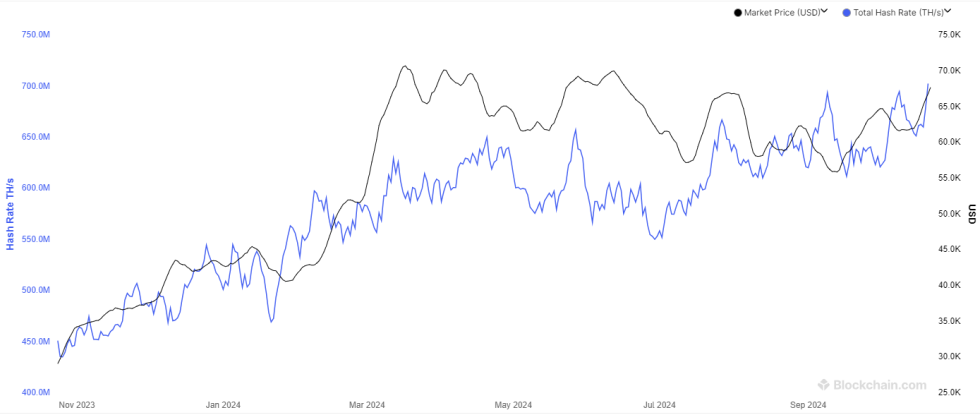On-chain data shows that the 7-day average Bitcoin mining hashrate witnessed a new spike and hit a new all-time high (ATH).
Bitcoin mining hashrate has recently observed a sharp increase
According to data from Blockchain.com, the 7-day average of BTC mining hash rate has recently observed an increase. “Mining hash rate” here refers to a metric that tracks the total amount of computing power that Bitcoin miners have connected to the blockchain.
The BTC network runs on a consensus system based on Proof-of-Work (PoW), where miners utilize this computing power to solve mathematical problems.
However, this entire power pool does not work together. Rather than working collectively toward the same goal, miners use individual mining farms to compete to be the first to add the next block to the chain.
This is by design. This is because Bitcoin cannot claim to be a “decentralized” network if power is concentrated in a group of entities. But what does total hashrate mean if there is no collective BTC power? The answer is simple. Because it reflects the sentiments of the miners as a whole.
When the value of this indicator increases, it means that miners find the BTC blockchain to be an attractive venture. On the other hand, recording a decline suggests that some of these chain validators no longer see any benefit in the network, which is why they decided to disconnect their machines. .
Here is a graph showing the trend of average 7-day Bitcoin mining hash rate over the past year.

The 7-day average value of the metric appears to have seen a spike in recent days | Source: Blockchain.com
As shown in the graph above, the 7-day average Bitcoin mining hash rate has shown a rapid increase over the past few days, surpassing the ATH set at the beginning of the month. The reason behind the recent spike in this indicator could be the bullish price action that the cryptocurrency has been enjoying recently.
Miners derive a major portion of their income through block grants. Block subsidies are fixed BTC rewards received in exchange for adding blocks to the network. Since block subsidies are awarded at a roughly constant rate, the only real variable related to a miner's revenue is the USD value of BTC.
The increase in mining hashrate at the beginning of the month came immediately after the price increase. Miners had expected it to continue operating, but when it turned out that was not the case, they withdrew the upgrade.
A similar pattern was witnessed last month as well. It remains to be seen whether the recent increase in Bitcoin mining hashrate will suffer the same fate, or if this price increase is worth scaling for miners.
BTC price
Bitcoin price growth has receded in recent days, with the asset returning to the $67,100 level.
Looks like the price of the coin has been marching up recently | Source: BTCUSDT on TradingView
Dall-E, Featured Image from Blockchain.com, Chart from TradingView.com

